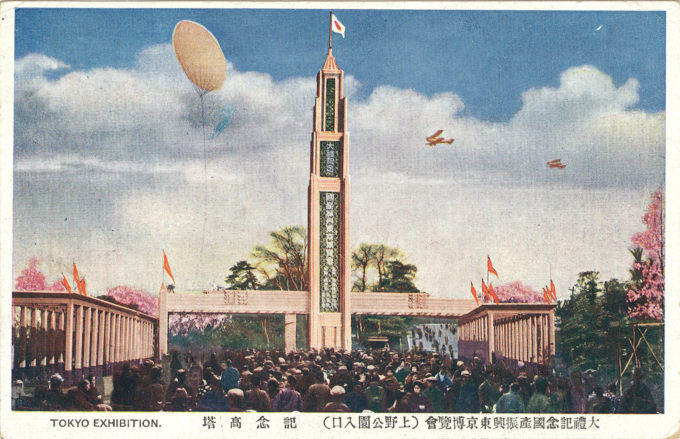
Tokyo Exposition for Domestic Industry Promotion in Commemoration of the Great Coronation, Ueno Park, Tokyo, 1928. Ueno Park Entrance & the Commemorative High Tower.
See also:
Peace Commemorative Exposition, Ueno Park, Tokyo, 1922.
Taisho Exhibition, Ueno Park, 1914.
“Under the auspices of the Tokyo Chamber of Commerce and Industry, the Tokyo Exhibition for the Encouragement of National Industries in Commemoration of the Coronation is being held for two months from March 24 this year [1928] in Ueno Park, Tokyo, including Shinobazu Pond.
“… A feature of this Exhibition lies in the method of dividing the exhibits distinctly into two sections: the First Section consists mainly of goods for export, and the Second Section of those which are consumed at home. Each prefecture is furnished with a space for exhibits of 15 tsubo on the average, five blocks in all covering an area of 2,700 tsubo being occupied by the prefectures throughout the country.
“… This is the first experiment of this kind since the great earthquake of 1923 on such a large scale, and is a bird’s eye view of the fruit of the national industries, which are now being rapidly restored, as well as being in commemoration of the Coronation which is to take place in Kyoto this fall. These considerations necessitated the enlargement of the space, resulting in the additional erection of No. 3 West Pavilion covering an area of 300 tsubo, to dispose of the exhibits from Tokyo Prefecture alone.”
– The Japan Magazine, April 1928
Miscellaneous Venues
- 1st Section “New Heaven and Earth” Entrance.
- 1st Section Main Entrance.
- 2nd Section Main Entrance.
- 2nd Section Hokkaido Pavilion.
- 2nd Section Karafuto (Sakhalin) Pavilion.
- 1st Section Entertainment Hall.
- 2nd Section Chosen (Korea) Pavilion.
- 2nd Section Chosen (Korea) Pavilion.
- 1st Section Chemical Industry Hall.
- 1st Section Children’s Country.
- 1st Section West Hall No. 2 & No. 3.
- 1st Section West Hall No. 1.
- Pedestrian Overpass.
- 1st Section Coronation Memorial Hall.
- Main Entrance Guidance Tower.
“[C]onflict in Europe [1914-1918] brought to Japan an unprecedented level of economic prosperity that became the bedrock of a fundamental transformation of Japanese politics, society and culture.
“… Japan in the aftermath of the Russo-Japanese War lagged behind the great powers in productive capacity and was saddled with 2 billion yen in debt. But between 1913 and 1922, the Japanese economy expanded by 5.1 percent, significantly higher than the international standard. And demographers argue that Japan underwent a demographic transition from high birth and death rates to low birth and death rates — typically the gauge of movent from a pre-industrial to an industrial economy — around the time of the Great War.
“Between 1910-14 and 1920-24, Japanese exports tripled and by 1916 had produced the first balance of payments surplus in Japanese history. By 1920, the surplus reached 2.7 billion yen and enabled Japan to compete, for the first time, in global competition to distribute international loans.
Grand Coronation Memorial Hall, Tokyo Exposition for Domestic Industry Promotion in Commemoration of the Coronation, Ueno Park, Tokyo, 1928.
“During the 1920-24 interval, manufactured goods comprised over 90 percent of Japanese exports. By 1926, Japan produced double the value of manufactured goods as in the primary sectors of agriculture, forestry and fisheries.
“The number of Japanese-owned cotton spindles in China leapt from 55,296 in 1910 to 801,662 in 1920, far outstripping the 256,284 spindles owned by Western interests after the war. For the first time, Japanese textiles established a firm foothold in India, the Dutch East Indies and other countries in Southeast Asia and the Pacific.
“… Between 1912 and 1926, the number of person-kilometers of rail traffic within Japan more than tripled and the number of ton-kilometers of freight traffic on rail more than doubled … The number of power plants in Japan expanded from twenty-eight in 1912 to 1,313 in 1925 and, while only 20 percent of Japanese households in 1912 were connected to electricity, by 1925 most domiciles were plugged into the power grid. From 1915 to 1919, the number of incorporated firms in Japan increased almost twofold, from 17,000 to 30,000. Manufacturing firms increased threefold to fourhold.
“Reflecting upon the astonishing economic transformation of the wartime years, Japan Chronicle editor A. Morgan Young noted that Tokyo, for the first time, lent money to Russia, France and Britain and that ‘her manufacturers were in the most eager demand in every country in the world.'”
– World War I and the Triumph of a New Japan, 1919-1930, by Frederick R. Dickinson, 2013
- Main gate at night. Tokyo Exposition for Domestic Industry Promotion in Commemoration of the Coronation, Ueno Park, Tokyo, 1928.
- Hokkaido Pavilion (left) & Formosa Pavilion. Tokyo Exposition for Domestic Industry Promotion in Commemoration of the Coronation, Ueno Park, Tokyo, 1928.
- Otairei (Grand Coronation) Memorial Hall at night. Tokyo Exposition for Domestic Industry Promotion in Commemoration of the Coronation, Ueno Park, Tokyo, 1928.
- Evening illuminations over Shinobazu Pond. Tokyo Exposition for Domestic Industry Promotion in Commemoration of the Coronation, Ueno Park, Tokyo, 1928.
- Showa Bridge seen from the front gate. Tokyo Exposition for Domestic Industry Promotion in Commemoration of the Coronation, Ueno Park, Tokyo, 1928.
- Panoramic view. Tokyo Exposition for Domestic Industry Promotion in Commemoration of the Coronation, Ueno Park, Tokyo, 1928.
- National Defense Museum. Tokyo Exposition for Domestic Industry Promotion in Commemoration of the Coronation, Ueno Park, Tokyo, 1928.
- West Building No. 2. Tokyo Exposition for Domestic Industry Promotion in Commemoration of the Coronation, Ueno Park, Tokyo, 1928.


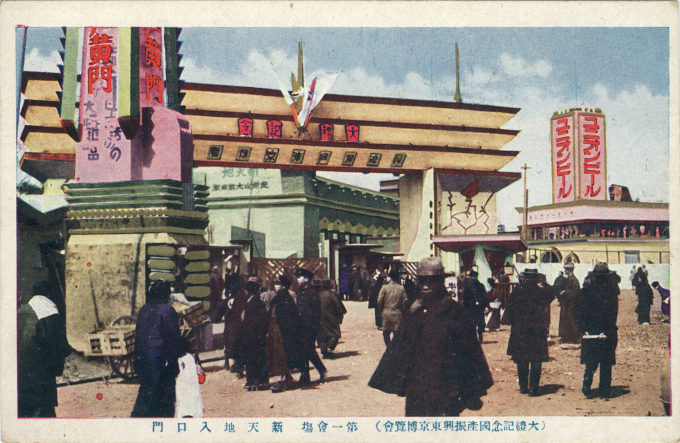

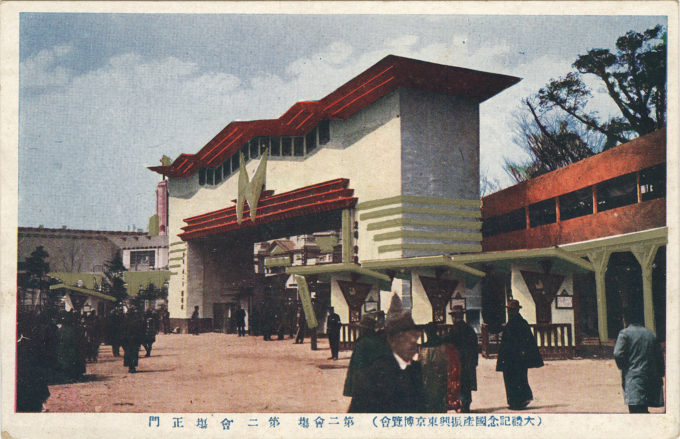
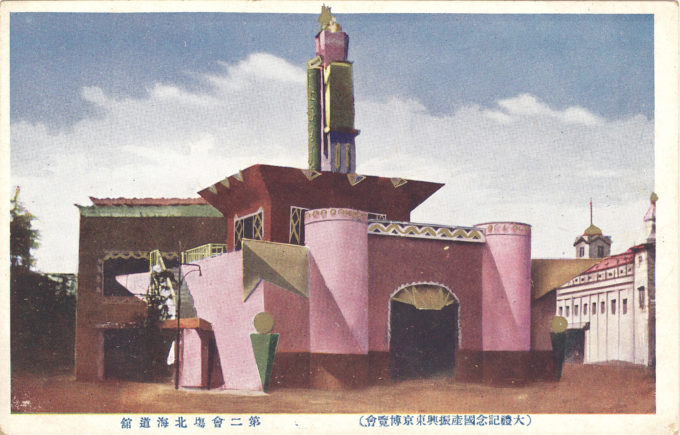
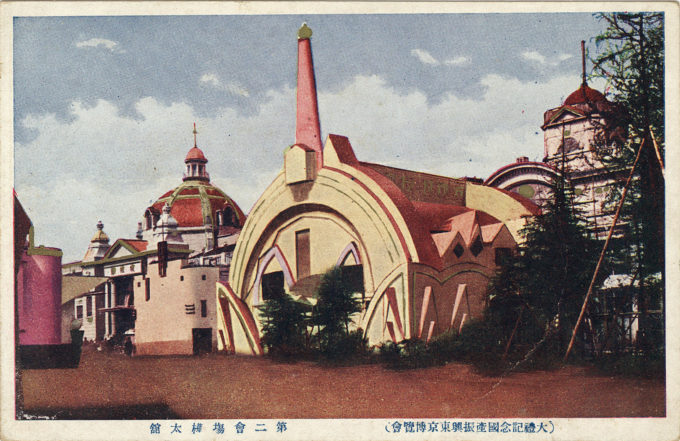
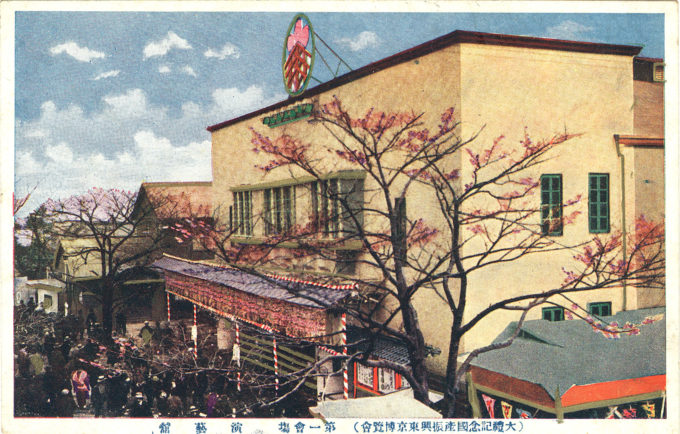
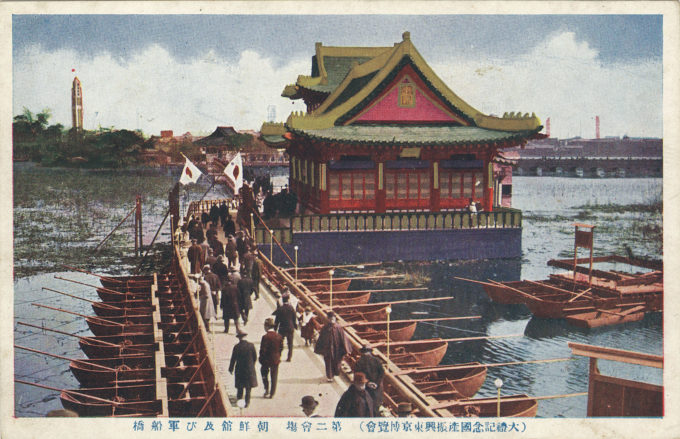
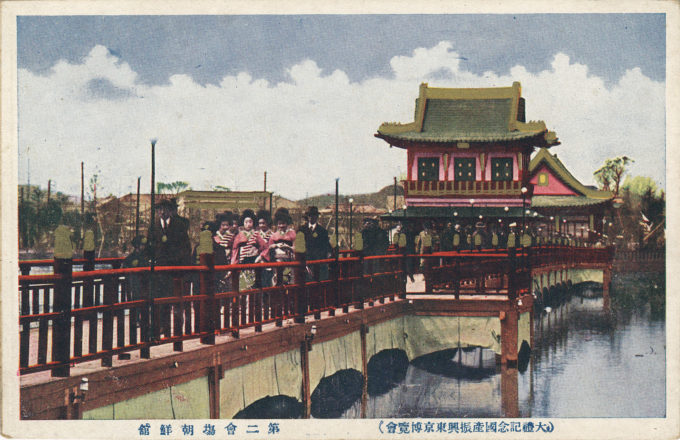
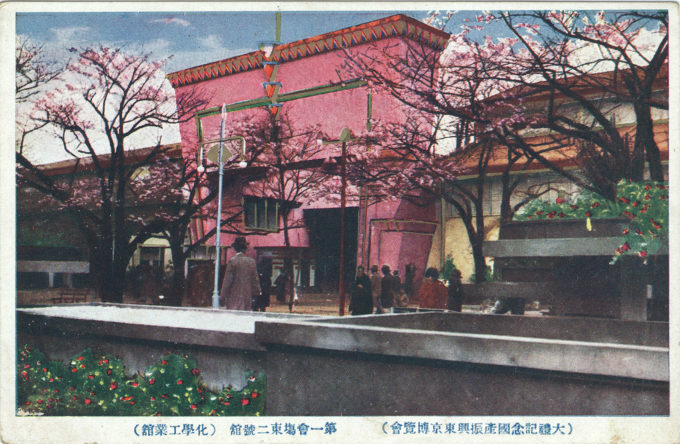

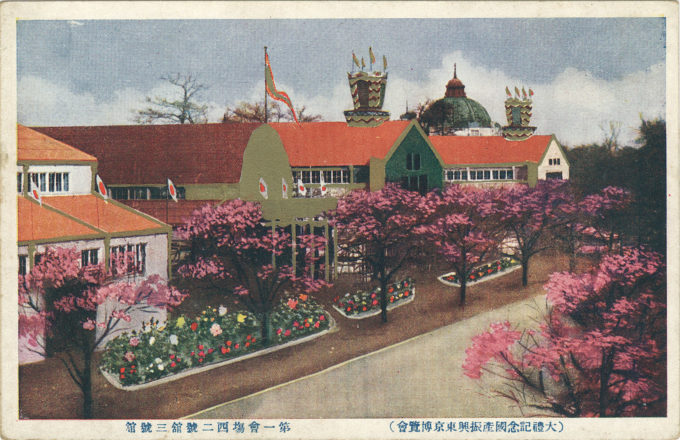
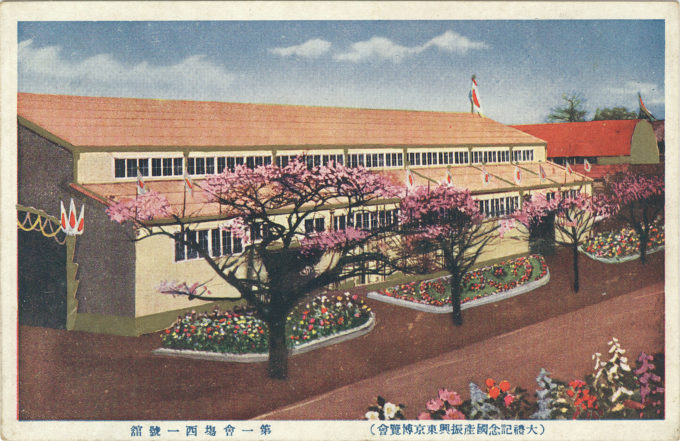
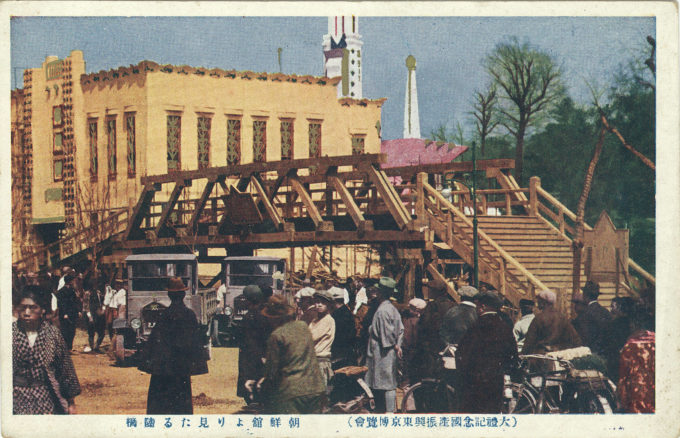
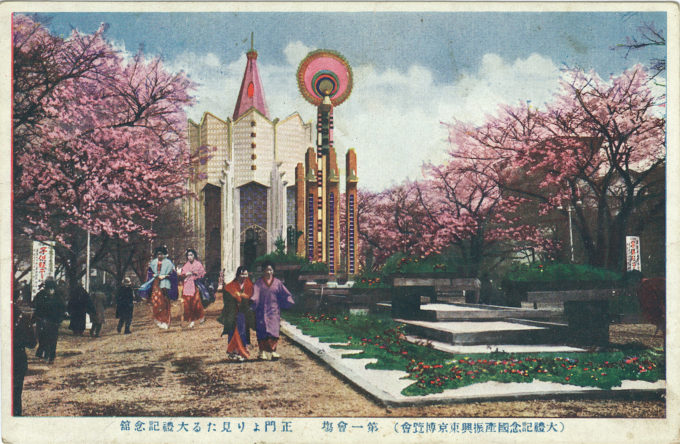
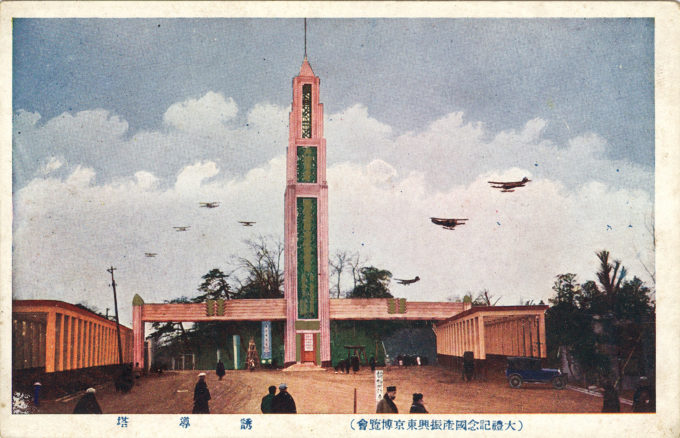
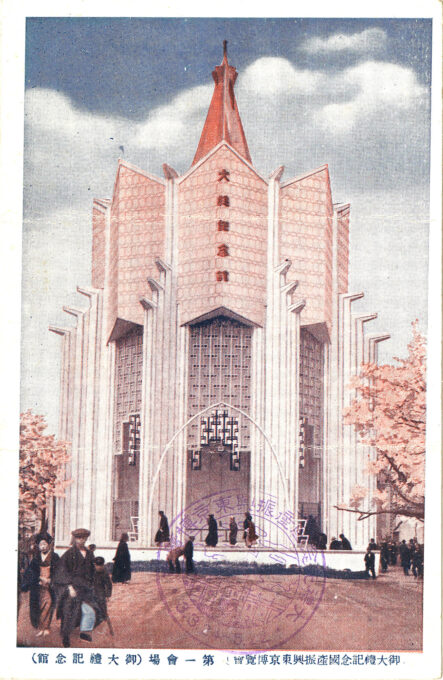
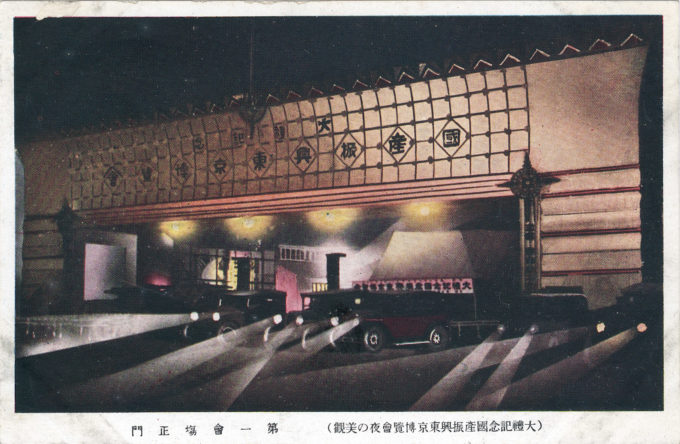
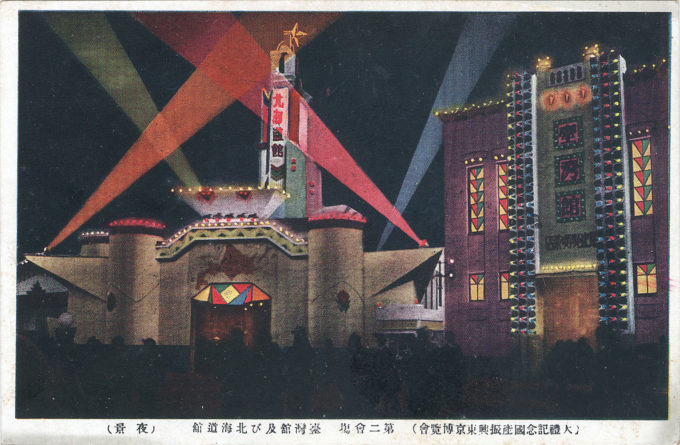
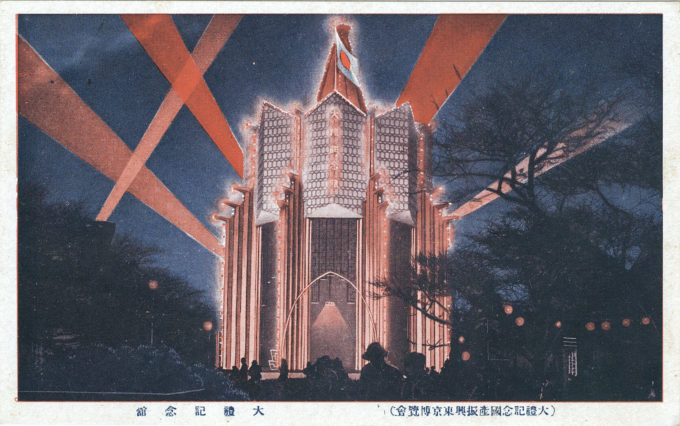
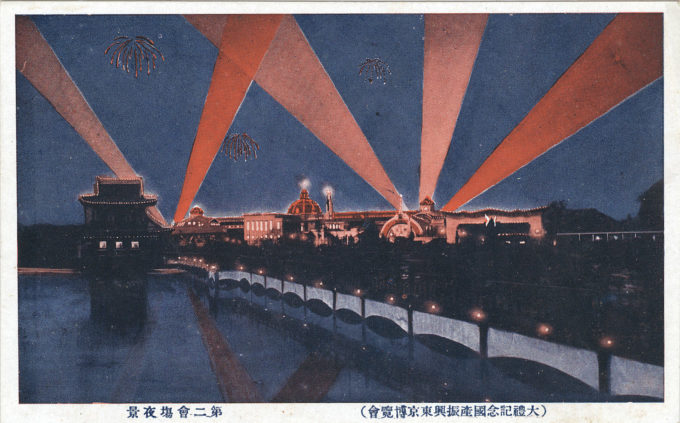
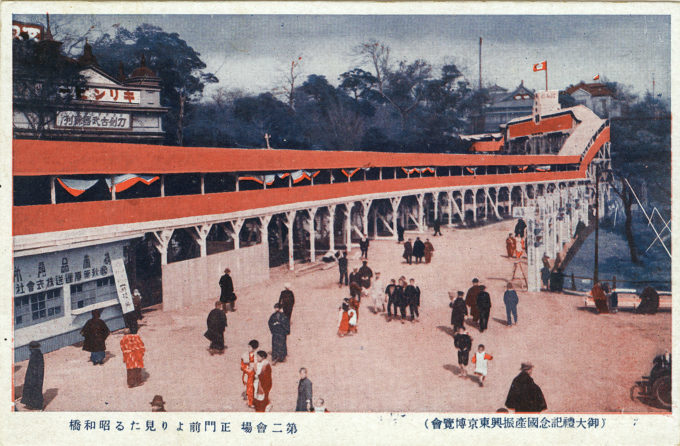
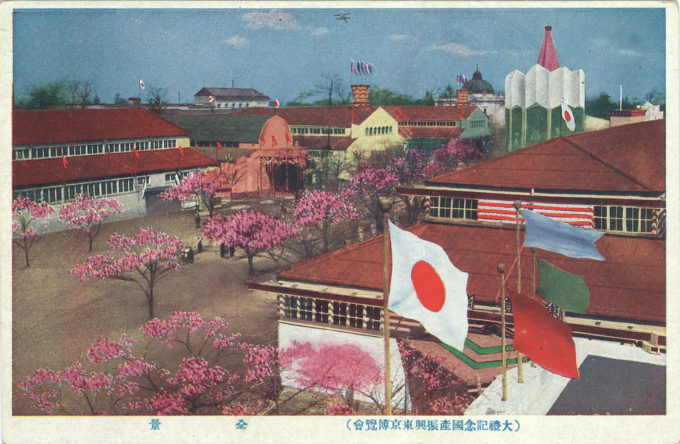
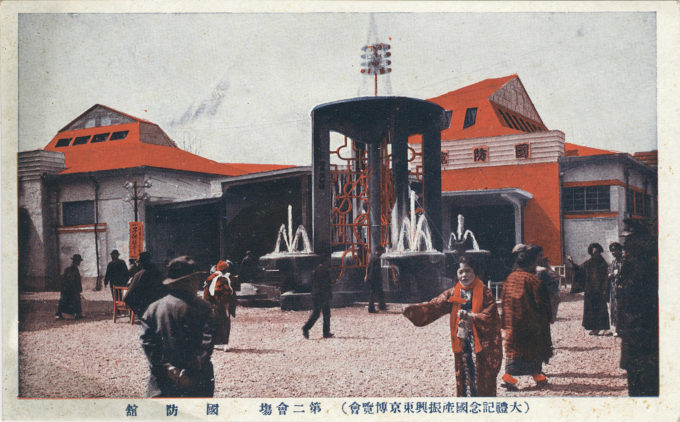
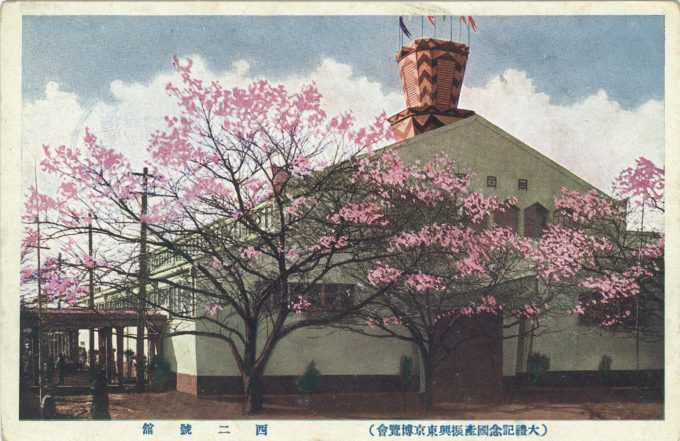
Pingback: Grand Kyoto Coronation Exposition, Kyoto, 1928. | Old Tokyo